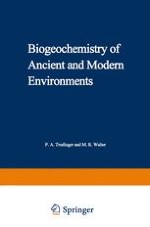1980 | OriginalPaper | Buchkapitel
Leaching of Copper-Bearing Mineral Substrates with Wild Microflora and with Laboratory-Bred Strains of Thiobacillus Ferrooxidans
verfasst von : Stoyan Groudev
Erschienen in: Biogeochemistry of Ancient and Modern Environments
Verlag: Springer Berlin Heidelberg
Enthalten in: Professional Book Archive
Aktivieren Sie unsere intelligente Suche, um passende Fachinhalte oder Patente zu finden.
Wählen Sie Textabschnitte aus um mit Künstlicher Intelligenz passenden Patente zu finden. powered by
Markieren Sie Textabschnitte, um KI-gestützt weitere passende Inhalte zu finden. powered by
At the present time the biological leaching of copper is applied on industrial scale in several ways: mainly as dump and heap leaching of mining wastes, and more rarely, as underground leaching of low-grade ore material in situ. Nevertheless, in all cases the leaching processes are carried out by the respective indigenous microflora. The latter includes wild strains of various microorganisms but the most important role in leaching is played by the chemolithotrophic bacterium Thiobacillus ferrooxidans (Trudinger, 1971; Corrans et al., 1972; Rossi, 1974; Groudev et al., 1978a). Its activity can be enhanced by an artificial improvement of some of the rate-limiting environmental factors, and, nowadays, this is the one and only applicable way to increase bioleaching under natural conditions. It must be noted, however, that a quite different way exists, at least theoretically: to “seed” leaching operations with laboratory-bred strains (or with wild strains taken from other ecosystems) possessing a leaching activity higher than that of the indigenous strains. That second way is closely connected with the problem of strain screening and improvement of T. ferrooxidans.
